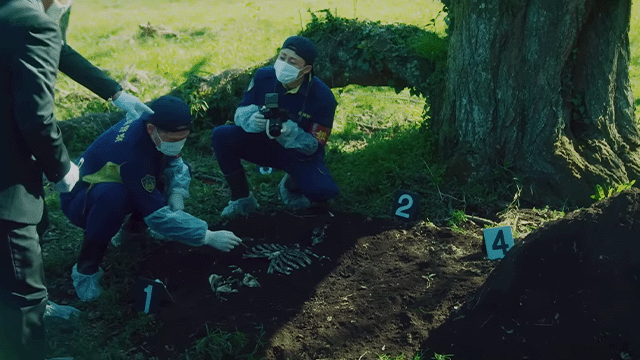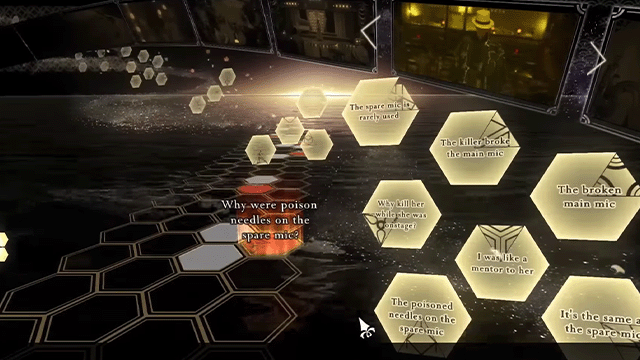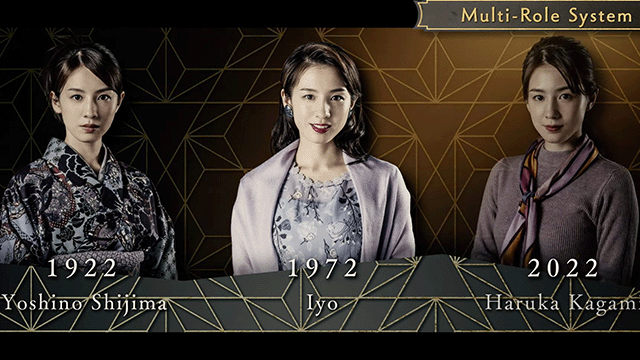You have to hand it to Square Enix. After the terrible reception The Quiet Man got, you’d think it would stay away from FMV games. Well, it did the opposite and published The Centennial Case: A Shijima Story from game studio h.a.n.d. However, even more surprising than the fact that Square Enix rolled the dice again on what is essentially a dead (other than a few notable instances) genre is that it’s actually rather good.
The hardest thing about making a good FMV game is that, by its nature, the sub-genre is a gimmick. It was born out of studios wanting to leverage the full-motion video that laserdisc and CD-ROMs made possible to significantly enhance the graphics of a game beyond what was possible with the 8 and 16-bit consoles of the time. Unfortunately, video is set in time, and there’s not a ton you can do with it to make it into a game. Some recent FMV hits, like Her Story, used scouring videos for clues as part of the story, which worked great. While the approach is more straightforward, The Centennial Case also has you solving mysteries.
Workin’ on a mystery
In The Centennial Case: A Shijima Story, you take the role of Haruka Kagami, an acclaimed mystery author. At an autograph signing, she encounters her scientific consultant, Eiji Shijima, who hires her under cover of writing about his affluent family’s succession ceremony. However, her real mission is two-fold. First, he needs Haruka to investigate the identity of a skeleton that was unearthed from beside the sakura tree where his family’s succession ceremony takes place. Most importantly, he wants her to look into the supposed existence of a Fruit of Youth that’s been a Shijima family secret for generations and determine whether it really has the properties to stop the aging process.
In addition to the succession ceremony, the Shijima family has another tradition. One of them is murdered roughly every decade. The meat of the game is spent solving the events behind each death which in turn sheds light on the present-day mystery.
While the cast isn’t very extensive, the studio got its money’s worth out of them. Each chapter focuses on the death of a single character, and Haruka investigates them by reading through articles or notebooks. However, instead of making us sit through something that dry, we’re transported into her imagination. To fill the roles in each chapter, Haruka draws on familiar faces. So, a cast member may play totally different characters depending on which part of the game you’re watching. This might seem somewhat cheesy on paper, but the game has surprisingly high production value and could have just as easily been adapted as a TV miniseries.
Goin’ wherever it leads
So, this is an FMV game, which means you’re going to be doing a lot of watching. Each chapter plays out roughly the same way. Each of them has a mystery that has to be solved revolving around a death. After watching the footage, players are taken to Haruka’s “cognitive space” to put together the clues.
Within Haruka’s cognitive space, there is a hexagonal board. When you begin to solve the case, it’ll have one or more red mystery hexagons asking simple questions. To answer these questions, you have to match the grey clue hexagons with the correct symbol to the right mystery hexagon. When you’ve connected enough clues, you’ll form a hypothesis hexagon. Creating enough of these will eventually lead to the creation of a reasoning hexagon, which completes that section.
Unfortunately, things somewhat fall apart here. There’s not a ton of challenge to this section because the hexagons can be matched using the symbols placed on them. Match the right hypothesis symbol to the right mystery symbol, and you’ve completed it without thinking about the reasoning behind it. There are some wrong answers scattered throughout, but it’s essentially a multiple-choice process that’s easy to brute force.
The interface can also be a bit overwhelming. I appreciated the ability to instantly replay scenes, the relationship chart, and all the tools to help solve the mysteries. I just wish that the actual solving part had more challenge to it.
Fortunately, there’s no actual fail state in this game. If you make the wrong choice in your deduction, you’ll get a game over FMV and immediately be taken back to the hexagon to adjust your selections.
Runnin’ down a dream
On the technical side of things, the PS5 version is the best to play. For some reason, that’s the only platform that features 4K video. Even on PC, you’re stuck with 1080p. That might change in a future patch, but this is Square Enix we’re talking about here.
Other than the above issue, the game ran perfectly fine for me. There aren’t a lot of moving parts here since the bulk of the gameplay is FMVs and menu, and those work well.
As far as audio options go, there is a Japanese and English dub as well as full subtitles. Unlike most weabeaux, I don’t mind listening to a dub. I get tired of reading subs mostly because every developer wants to make them ant-sized. Fortunately, the English cast did a decent job, and it’s a viable alternative to the original Japanese.
The Centennial Case: A Shijima Story Review: The final verdict
I thoroughly enjoyed The Centennial Case: A Shijima Story, but it’s definitely an oddity in today’s gaming landscape. It’s more “interactive film” than a video game, and you should definitely go into it with the mindset that it’s something that’s meant to be watched instead of played.
|
8.0
|
|
|




